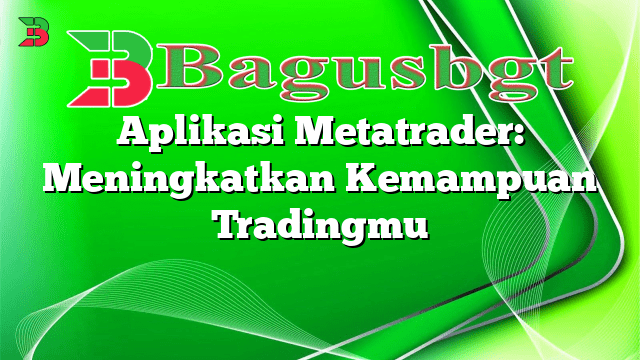Hello readers, welcome to this comprehensive guide on how forex trading works. In this article, we will delve into the world of forex trading, exploring its intricacies and shedding light on its advantages and disadvantages. Whether you are a beginner or an experienced trader, this guide aims to provide you with a thorough understanding of forex trading and equip you with the knowledge needed to succeed in this dynamic market.
1. Understanding the Basics of Forex Trading
Forex trading, also known as foreign exchange trading, involves buying and selling currencies in the global market. Traders participate in this market with the aim of making a profit by speculating on the fluctuations in currency exchange rates. The forex market operates 24 hours a day, five days a week, making it the largest and most liquid financial market in the world.
Advantages:
- Liquidity: The forex market offers high liquidity, ensuring that traders can enter or exit positions at any time.
- Accessibility: Forex trading is accessible to individuals from all walks of life, thanks to online trading platforms.
- Potential for Profit: With proper knowledge and analysis, forex trading can be a lucrative venture.
Disadvantages:
- Risk of Loss: Forex trading involves significant risk, and traders may lose their investments if they make incorrect predictions.
- Complexity: Understanding market dynamics and analyzing various factors that influence currency movements can be daunting for beginners.
2. The Role of Currency Pairs
In forex trading, currencies are always traded in pairs. Each currency pair represents the exchange rate between two currencies. The first currency in the pair is called the base currency, while the second currency is known as the quote currency. For example, in the EUR/USD pair, the euro is the base currency, and the US dollar is the quote currency.
When trading currency pairs, traders speculate on whether the value of the base currency will rise or fall in relation to the quote currency. By correctly predicting these movements, traders can profit from their trades.
3. Market Participants
The forex market involves various participants, including individual traders, financial institutions, hedge funds, and central banks. These participants engage in trading activities to meet their different objectives, such as hedging against currency risks, facilitating international trade, or seeking profit opportunities.
4. Fundamental and Technical Analysis
Successful forex traders rely on both fundamental and technical analysis to make informed trading decisions. Fundamental analysis involves studying economic indicators, geopolitical events, and monetary policies to assess the overall health and potential future movements of a currency. Technical analysis, on the other hand, involves analyzing historical price patterns and using indicators to identify potential entry and exit points.
5. Leveraging and Margin
Leveraging allows traders to control larger positions in the market with a smaller amount of capital. Forex brokers offer leverage, which is expressed as a ratio, such as 1:50 or 1:100. While leverage can amplify profits, it also magnifies losses. Traders should exercise caution and use proper risk management techniques when trading with leverage.
6. Types of Forex Orders
In forex trading, traders can place different types of orders to execute their trades. Market orders are executed at the current market price, while pending orders allow traders to set specific entry and exit points for their trades. Some common types of pending orders include limit orders, stop orders, and take profit orders.
7. Risk Management Strategies
Managing risk is crucial in forex trading. Traders should employ various risk management strategies, such as setting stop-loss orders to limit potential losses, diversifying their portfolio, and not risking more than a certain percentage of their trading capital on a single trade.
8. Forex Trading Alternatives
While forex trading is a popular choice for many traders, there are alternative investment options available. Some alternatives include stock trading, commodity trading, and cryptocurrency trading. Each alternative has its unique characteristics and requires a different set of skills and knowledge.
9. Forex Trading FAQ
| Question | Answer |
|---|---|
| What is a pip? | A pip is the smallest unit of measurement for currency movements. |
| Can I trade forex with a small amount of capital? | Yes, with leverage, traders can trade forex with a small amount of capital. However, it is important to manage risk effectively. |
| How long does it take to become a successful forex trader? | There is no fixed timeframe for becoming a successful forex trader. It requires continuous learning, practice, and experience. |
| Is forex trading suitable for everyone? | Forex trading may not be suitable for everyone. It is important to assess your financial situation, risk tolerance, and trading objectives before getting involved. |
10. Conclusion
In conclusion, forex trading offers numerous opportunities for individuals to profit from currency fluctuations. However, it is important to understand the basics, develop a sound trading strategy, and manage risk effectively. By constantly learning and adapting to market conditions, traders can increase their chances of success in the dynamic world of forex trading.
 Bagus Banget Kumpulan Informasi terbaru dari berbagai sumber yang terpercaya
Bagus Banget Kumpulan Informasi terbaru dari berbagai sumber yang terpercaya



